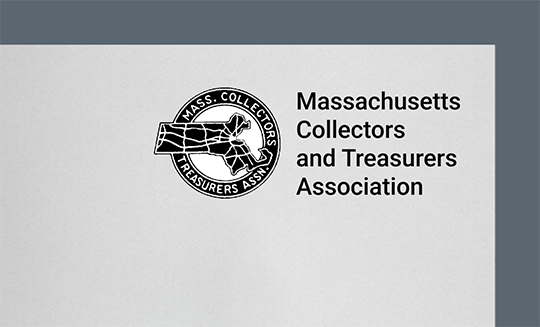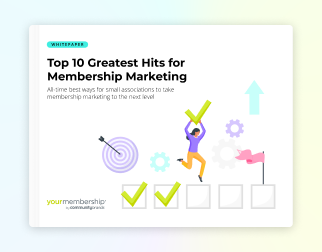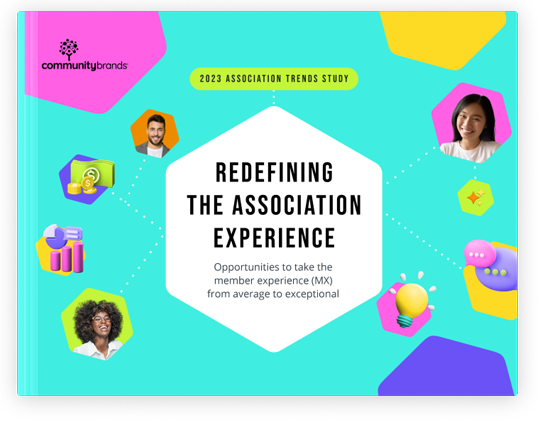Your members have high demands for privacy and data security. But they also want personalized member communications.
How can your association’s small staff meet these demands? Here are four tips.
Data privacy and cyber security are top of mind for many people these days.
The 2023 Association Trends Study by Community Brands shows that association professionals rate “ensuring data privacy and information security” as one of the top five most important business objectives for their IT team to address.
Data security is important for members, too. Another association industry study from Community Brands shows that 71 percent of association members say they worry about data privacy and security. On the bright side, this concern doesn’t prevent most of them from sharing information if they feel it’s secure and/or for their benefit.
The same study shows that members want personalized content from their associations. Seventy-nine percent say it is very or somewhat important that their organization provides targeted, valuable content.
But all of this might seem like a dilemma for associations with small staffs: How do you gather and use the data you need to provide personalized member communications while meeting demands for privacy and data security?
Four ways to balance data privacy with personalization to provide a better member experience.
1. How to re-think your approach to data protection.
Develop a data governance strategy that includes policies for what type of data you collect, how long you keep data, how you use it, and how you keep it secure. Make sure your members know you have data privacy and security standards in place, and explain how the information you collect will be used for a more personalized experience. Your members in turn are more likely to trust you, and that trust will translate into a better member experience and, ultimately, greater member loyalty.
2. Keep your member data in one secure
As your small association grows and collects more member data, it’s time to move away from spreadsheets. When your member data is housed in many different places and staff members are sending spreadsheets back and forth, it’s tough to collect and share data safely. You need a single place to keep your member data secure.
Moving member data and management into association management software (AMS) puts all of your member data in one, secure place.
There are many AMS solutions in the marketplace today, with varying levels of data protection. So, be sure your AMS vendor values security and offers the following functionality to protect your member data:
- Transparency into security and performance status
- Data recovery to safeguard your data from data storage errors, catastrophic failures, and everything in between
- Compliance certifications to validate security
Talk with the technology vendor to ensure they use best practices to prevent unauthorized access to data. For example, multi-factor authentication (MFA) increases data security by requiring your AMS users to enter a unique code upon entry of admin login credentials. Only when the valid provided code is entered will users be granted access.
3. How to use member data to deliver a more targeted, personalized experience?
There’s no point in collecting member data if you aren’t going to put it to good use. Use your AMS to collect and analyze data about your members’ career stages, interests, and behaviors. Let your members know that you’re gathering information to give them a member experience that better meets their needs. Then, provide them with the personalized benefits they’re seeking. For example, based on your members’ interests and preferences, recommend new industry reports or new services offered by your organization.
4. How to set up a preference center to gain and track consent and preferences?
Providing a personalized experience for your members requires giving them an easy way to let you know how and when they want to hear from you. That’s where a preference center comes in.
A preference center is an online community or portal that gives your members an easy way to control what communications they receive from your organization and how often they receive them. It also gives you another way to gather more of the data you need to improve member communications.
Your preference center also serves as a key means to comply with data privacy laws. A preference center can help you track the data you need to meet the requirements of regulations, including the General Data Protection Regulation (GDPR) and the California Consumer Privacy Act (CCPA).
Personalization and trust go hand in hand. Showing your members that your association understands, and is keeping up with, their expectations is a great way to provide a better member experience and develop loyal members.
As your association strives to balance members’ expectations for a personalized experience with their concerns about data security, be sure you use a thoughtful approach and modern technology that supports your efforts.
Learn more about how YourMembership helps you keep your member data safe while providing a great member experience: Explore YourMembership AMS.






